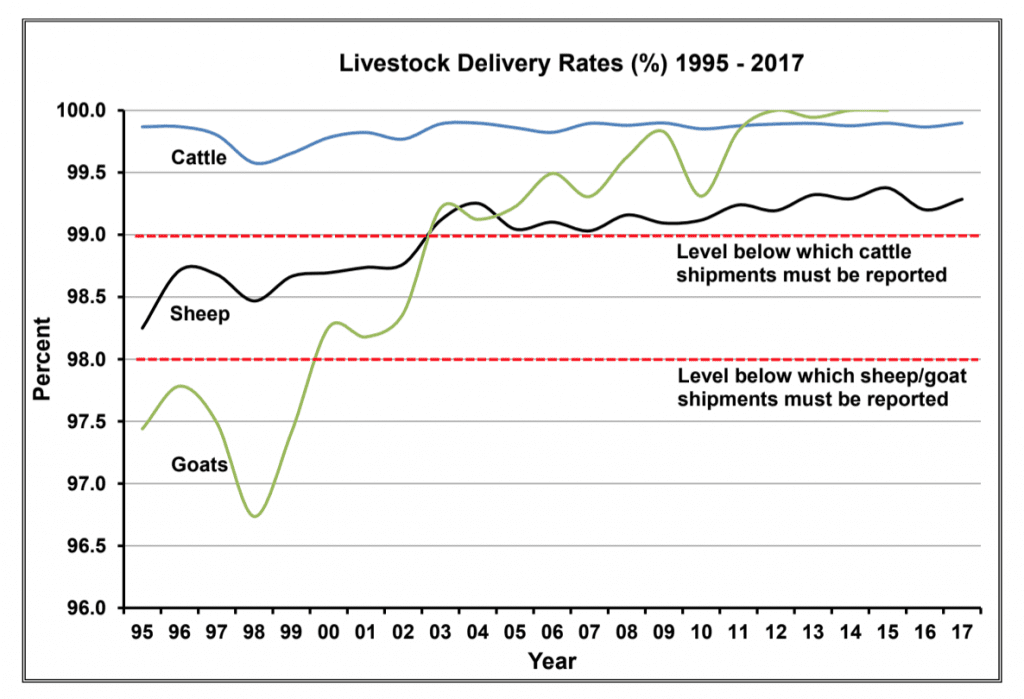
Percentages of sheep, cattle and goats successfully delivered by sea since 1995. Source: National Livestock Export Industry Sheep, Cattle and Goat Transport Performance Report 2017.
UPDATED live export transport performance statistics show Australia recorded 867 mortalities from 860,000 cattle exported in 2017, a mortality rate of 0.1 percent.
The details are contained in the newly released National Livestock Export Industry Sheep, Cattle and Goat Transport Performance Report 2017.
The annual Transport Performance Report, funded by Meat and Livestock Australia, LiveCorp and the Department of Agriculture and Food, Western Australia, provides a comprehensive breakdown of livestock export industry performance in terms of mortality rates of sheep, cattle and goats exported by sea and air, including trends by ship, species, time of year, load ports and major destinations.
The information in the report was obtained from ship Master’s Reports (which record livestock mortalities and other information about each voyage), other tailored shipboard records and from “Yellow Books”, which record more-detailed information about numbers of livestock mortalities (ports of loading and discharge, and daily mortality by type-age-sex categories over the loading, voyage and discharge phases) than is available from the Master’s Report.
The 2017 report showed an overall mortality rate for cattle during sea transport to all destinations during 2017 was 0.10 percent (867 mortalities in 0.86 million cattle exported).
This was a 24 percent fall compared to the mortality rate of 0.13 percent observed in 2016 and represents a record low.
The overall mortality rates on voyages to the Middle East/North Africa, North-East Asia and Miscellaneous destinations were 0.17pc (72 mortalities in 0.04 million cattle exported), 0.11pc (100 mortalities in 0.09 million cattle) and 0.17pc (5 mortalities in 3000 cattle) respectively. The highest overall mortality rate on a regional basis was 0.21pc, for exports to South-East Europe (44 mortalities in 0.02 million cattle exported), while the lowest overall mortality rate was 0.09pc for exports to South-East Asia (646 mortalities in 0.70 million cattle exported). Trade to South-East Asia accounted for 82pc of all cattle exported in 2017.
Australia has exported between 620,000 and 1.3 million cattle per year over the past decade, and the report shows that during that time annual mortality has been maintained within 0.10 and 0.15 percent.
The overall mortality rate for sheep during sea transport to all destinations during 2017 was 0.71pc (13,183 mortalities in 1.85 million sheep exported).
This was an 11pc fall compared the mortality rate of 0.80pc observed in 2016. The main ports of loading were Fremantle (88pc), followed by Adelaide (11.3pc) and Portland (0.7pc).
To view the full report on the Livecorp website click here
